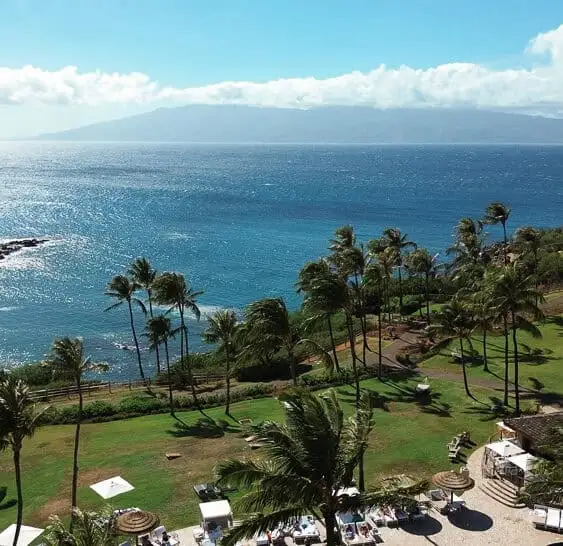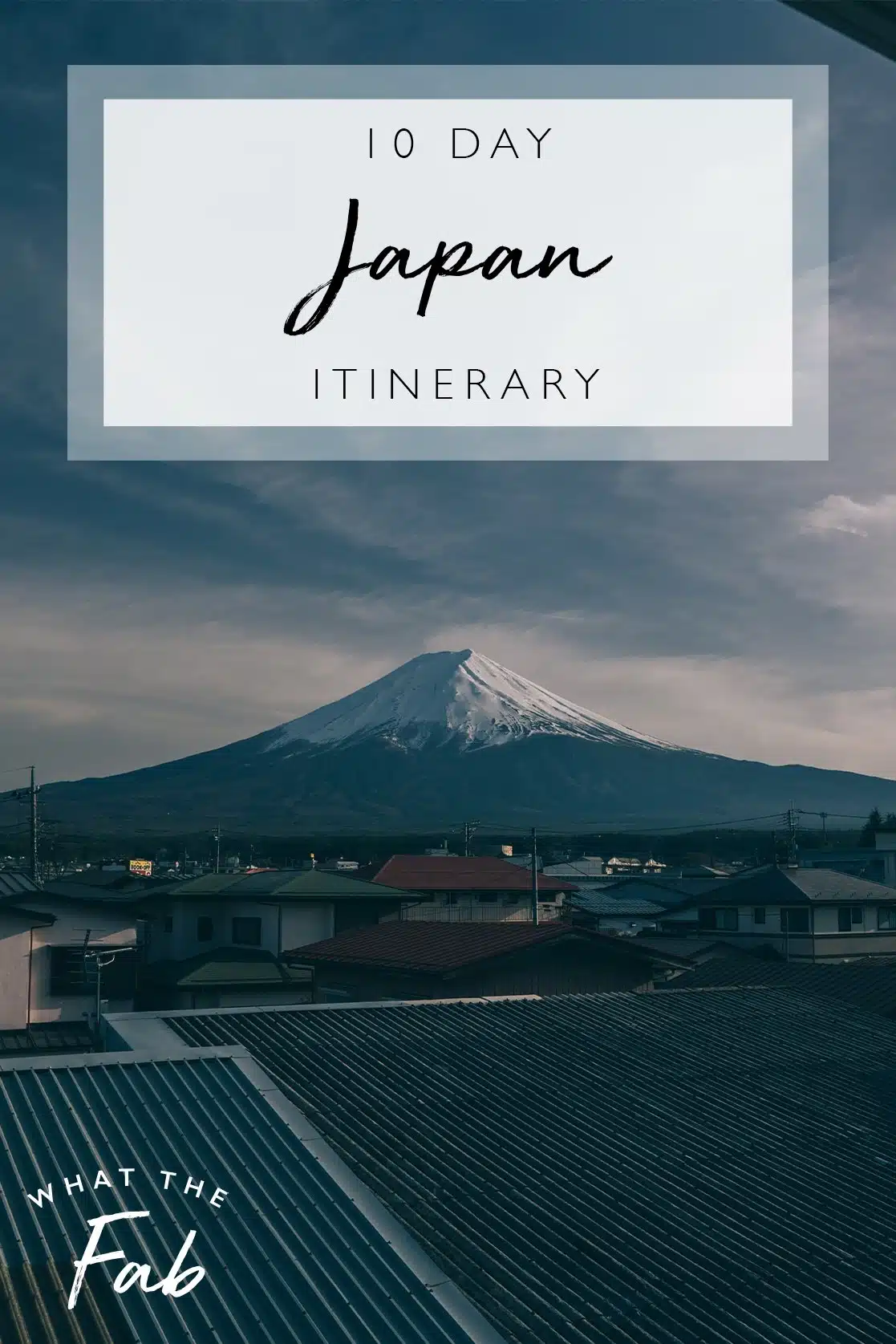
Japan is an amazing country—truly incredible! I’m so excited to be sharing my 10 day Japan itinerary.
There is so much to do here; from the Tsukiji Fish Market in Tokyo (now the Toyosu Fish Market) to checking out what cherry blossom season has to offer in Hiroshima and Osaka. It’s definitely a bucket list country.
But for a first-timer, it can really seem overwhelming. With about a million things to do and places to explore.
So I hope that you can get some inspiration from my 10 day Japan travel itinerary! It is the perfect way for a first-timer to get an insider’s point of view of the hottest spots in Japan before wanting to plan another trip and come back for more!
So, without further ado, let’s go!
10 Day Japan Itinerary
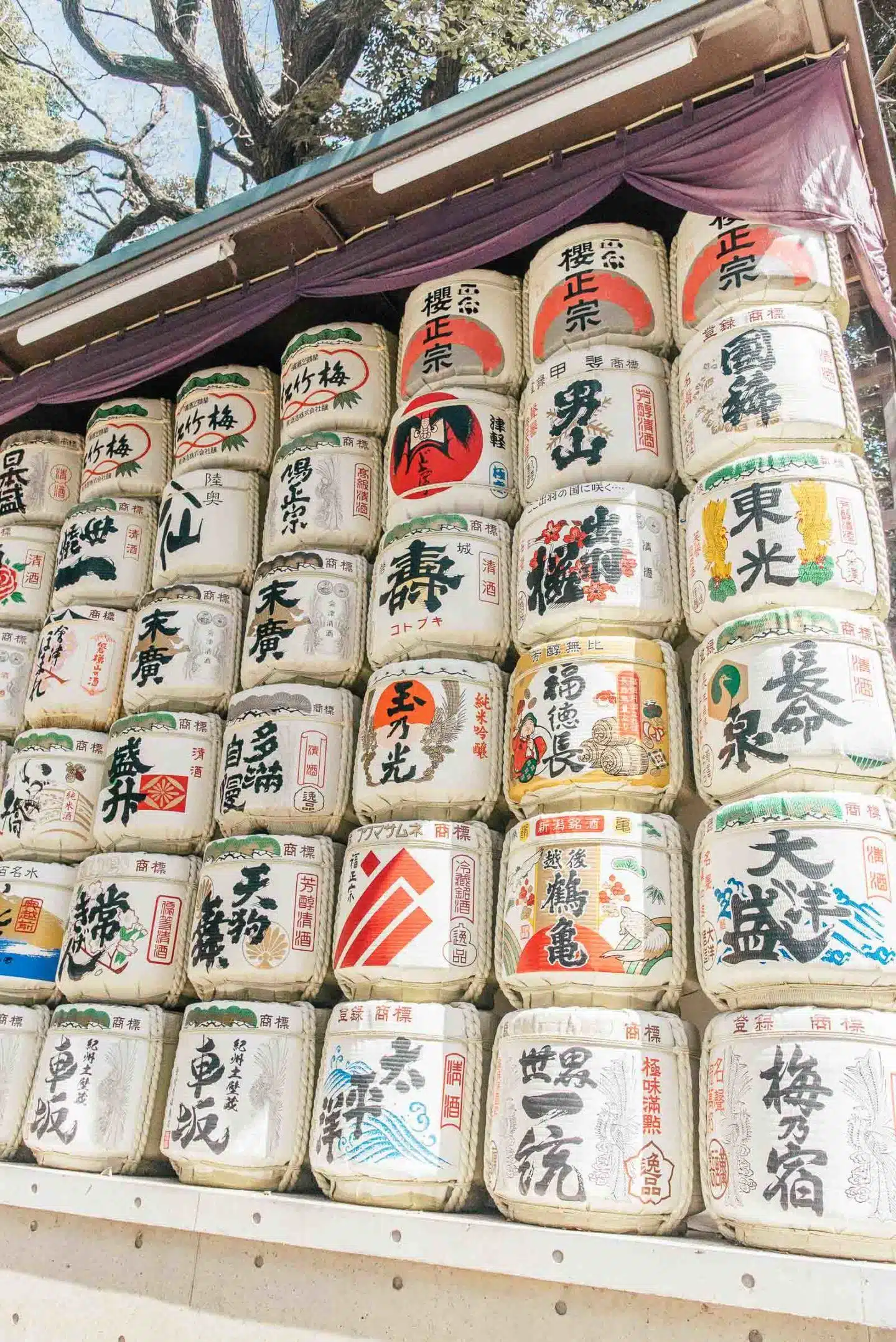
Day One
Your first day in Japan is all about getting acquainted with the sprawling Japanese capital of Tokyo!
Landing in either of Tokyo’s international airports (Haneda in the west or Narita in the east), you can either take on the city’s transportation system—NOT recommended in rush hour—or treat yourself to a taxi if you’re feeling jetlagged.
Note: taxis in Tokyo can be pretty pricey! We took an airport shuttle/bus and it was much more affordable.
Once you’ve checked in at your accommodation and have gotten yourself refreshed, it’s time to go out and explore the amazing city that awaits you. Forget jetlag and go for it!
With your Japan Rail Pass at the ready, you’ll be able to travel the Yamanote Line (which runs in a circle around the city), and any other JR line, free of charge.
First stop? Meiji-Jingu. This solemn, tree-filled Shinto shrine, built-in 1920, is where Emperor Meiji is revered. It is totally different from the surrounding urban metropolis that makes up the city.
Next door is Yoyogi Park. If it happens to be a Sunday, you’ll be in luck—there are often some interesting characters to be found here. They’ll be in drum circles, practicing frisbee, or breakdancing to rockabilly music!
After the park? Harajuku. Take some snaps of the beautiful 1920s Harajuku Train Station, then hold your breath and dive into Takeshita-Dori opposite. This is all about Japanese youth culture, where punk, lolita, goth, indie, and all manner of other styles—some kowai (scary), some kawaii (cute)— hang out. It is also a great spot to pick up rainbow-colored sweet treats or lunch at one of the MANY cafes here!
From here, make your way on foot to Shibuya Crossing and the infamous intersection— the busiest pedestrian crossing in the world! Thousands of people cross every time the sign turns green.
For sunset, it’s all about the Tokyo Metropolitan Government Building in Shinjuku, with its free-of-charge observation deck on the 45th floor. Finish up with a stroll into Kabuki-Cho and Golden Gai in search of food and fun.
Not bad for the first day in Japan! While you’re in Shinjuku and you have the time definitely make a stop at the Shinjuu Gyoen National Garden.
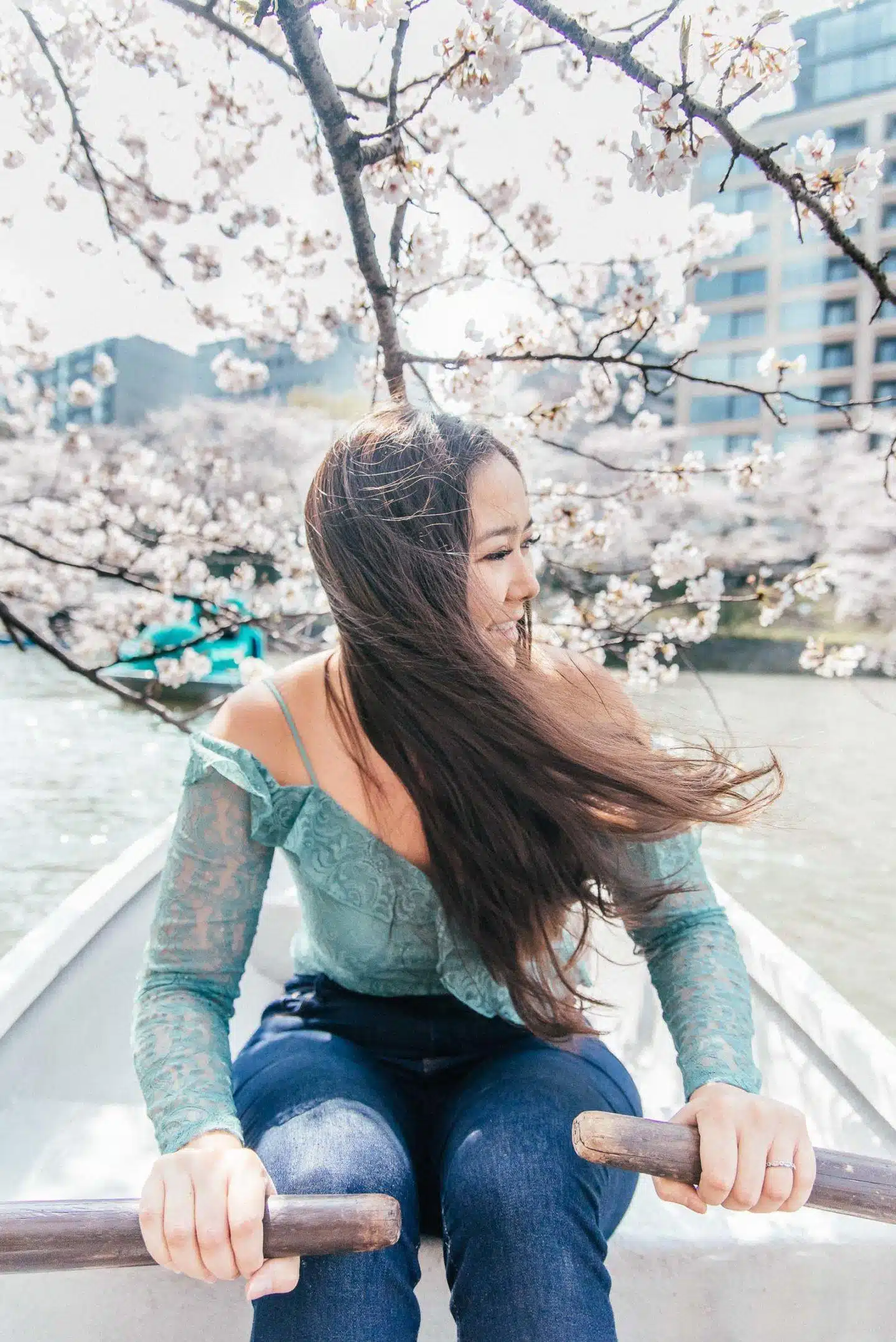
Day Two
You’re probably feeling tired, but it’s time to get up and get some spiritual healing in Asakusa—namely, at Sensoji.
This Buddhist temple is Tokyo’s most famous, and you can learn all about it on a free (English-speaking) tour.
Once you’re done looking in awe at all the buildings here—including the huge lantern in the Kaminarimon (“Lightning Gate”)—and doing a bit of shopping along the parade of stalls that lead to the temple itself, you’ll probably want a breather. However, if you want to keep sightseeing I also recommend touring the Kyoto Imperial Palace.
Next stop: Ueno Park. It can be walked from Asakusa if you feel like walking, but if not, it’s just a couple of stops on the Tokyo Metro.
Ueno Park is a cool place to stroll around any time of year—but it’s super famous during cherry blossom season. The paths are lined with cotton candy-pink sakura (cherry) trees!
Here is also where you will find the Tokyo National Museum. It’s a great place to wander for an hour or so to get to grips with the history of the country. There are all sorts of exhibitions held here, from those on kimonos to those about ancient Japan.
After this, it’s time for a stroll in Yanaka!
This area is known for its old buildings (try the art gallery at SCAI The Bathhouse, or go for a coffee at 100-year-old Kayaba Coffee) and temples. The cemetery is famous, too, for its cute kitty residents.
Make your way back to Ueno and head southeast of Ueno Park to find an area packed with eateries and stalls: Ameyayokocho.
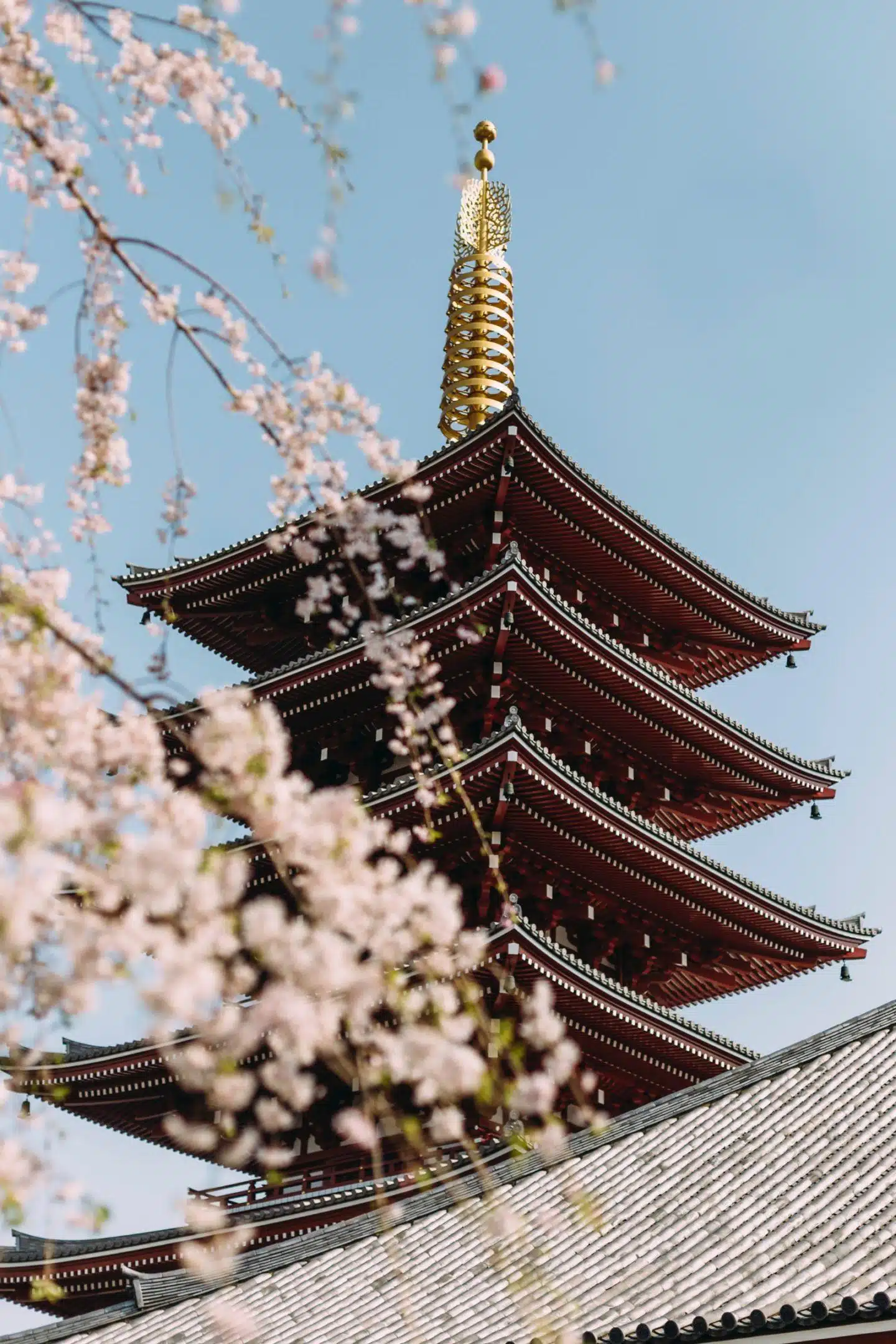
Day Three
Take a full-day trip from Tokyo today by boarding a train at Shibuya station all the way to the neighboring city of Yokohama. You’ll be there in just 40 minutes!
It might not be Hakone, but Yokohama is the second-largest city in Japan…but you’d never know it. You will instantly notice the much more laid back vibes going on here.
This urban center is also home to all sorts of interesting attractions.
There are the old Western-style homes of “The Bluff” or Yamate district in Motomachi. This area dates back to when the town was first opened up to foreign trade in 1859; the buildings are the homes of merchants—foreign and Japanese—who set up shop here, as well as other professionals such as architects and engineers who helped shape Japan’s 19th-century modernization.
Chukagai—or Chinatown—is next door. It’s literally like stepping into a different country for a few blocks!
After exploring Chinatown—umm definitely buy a bao (steamed bun) when you’re there)—you should make your way to the seafront. Specifically, this is Yamashita Park. Find a bench and eat that delicious bao!
One thing I’d really recommend doing is going to the Shin-Yokohama Raumen Museum. Totally. Especially if you like ramen (who doesn’t?)!
It’s basically a food court with educational value—and all decked out to look like an old-school Tokyo from 1948!
For more noodle-based fun, there’s the Cup Noodle Museum, where you even get to make your own customized flavor of Cup Noodle (and take it away with you)!
Finish up with dinner at one of the cozy new restaurants in the Hammerhead development—or a ride on the rollercoaster or Ferris wheel in iconic Cosmoworld (set in the futuristic 1980s development of Minato Mirai along the waterfront)—before heading back to Tokyo.
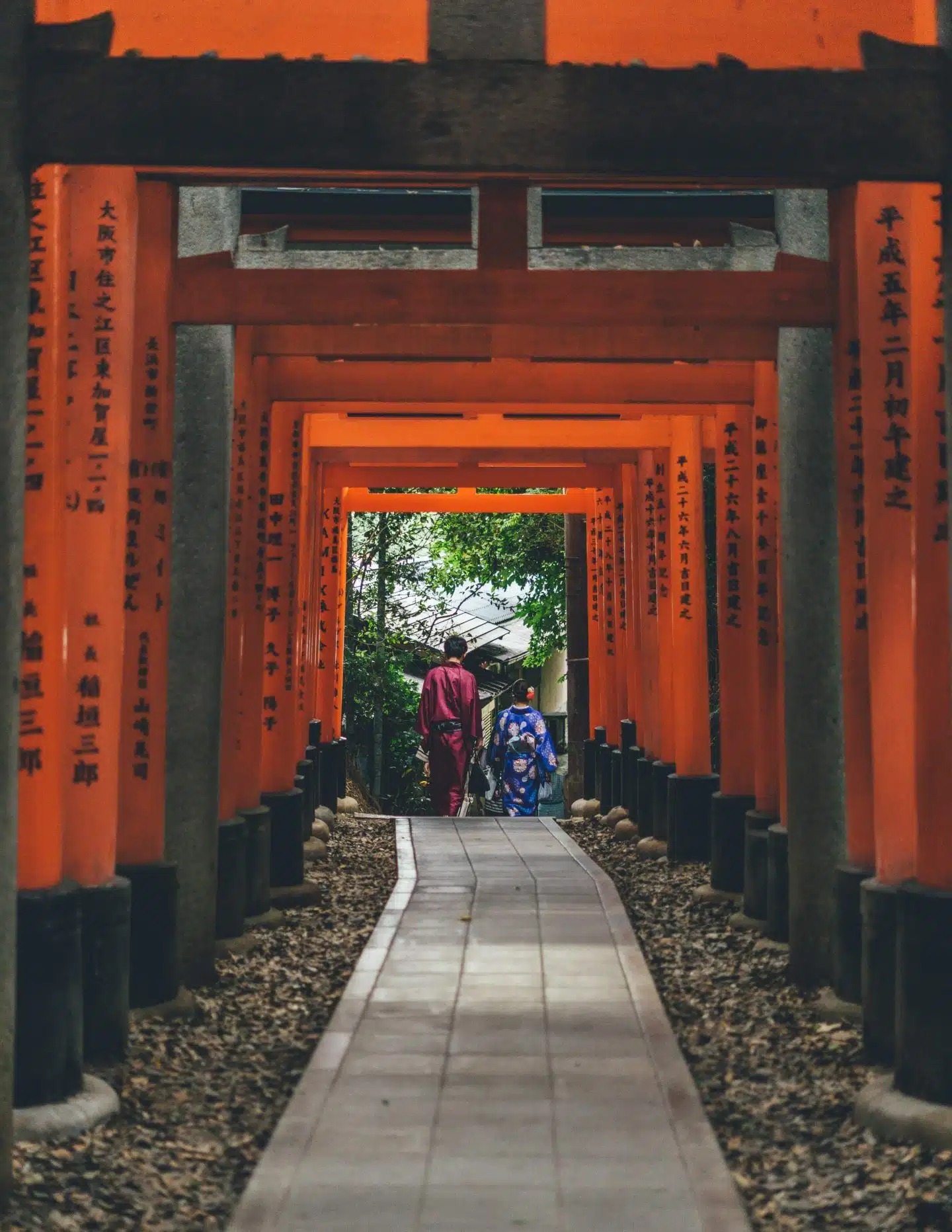
Day Four
Now it’s REALLY time to put that rail pass to good use by hopping on one of the Japan Rail shinkansen (bullet trains) to Kyoto!
A pro tip: Ask to sit “Fuji–gawa” which means the side of the train where Mount Fuji will be visible as you pass. You don’t get much more of an I’m-definitely-in-Japan travel moment as you do when passing by this iconic mountain on a bullet train!!
Kyoto is the old capital of Japan. As a result, it is filled with old buildings and temples—including the Gion area, where real-life geisha still work.
Check into your hotel and spend the day at the temples. Make sure to check out the super famous Kinkakuji, a temple pavilion that is actually completely covered in gold leaf. Overlooking a pond, this place is super beautiful.
You should also visit Kiyomizu-Dera—also a UNESCO World Heritage Site and one of the best spots in Kyoto for history and nature alike.
There are so many temples here that you will spend a day getting completely lost amongst them. But when it starts to get towards sunset, head over to Fushimi Inari-Taisha.
You have definitely seen this before, but not in real life!
Thousands of red torii (sacred Shrine gates) mark the trail up to the top of a mountain, which is completely covered in little shrines and tiny worshipping spots along the way. It’s all dedicated to the shapeshifting fox god of fortune, Inari.
Make sure to catch the sunset from the top of the mountain. It’s unreal!
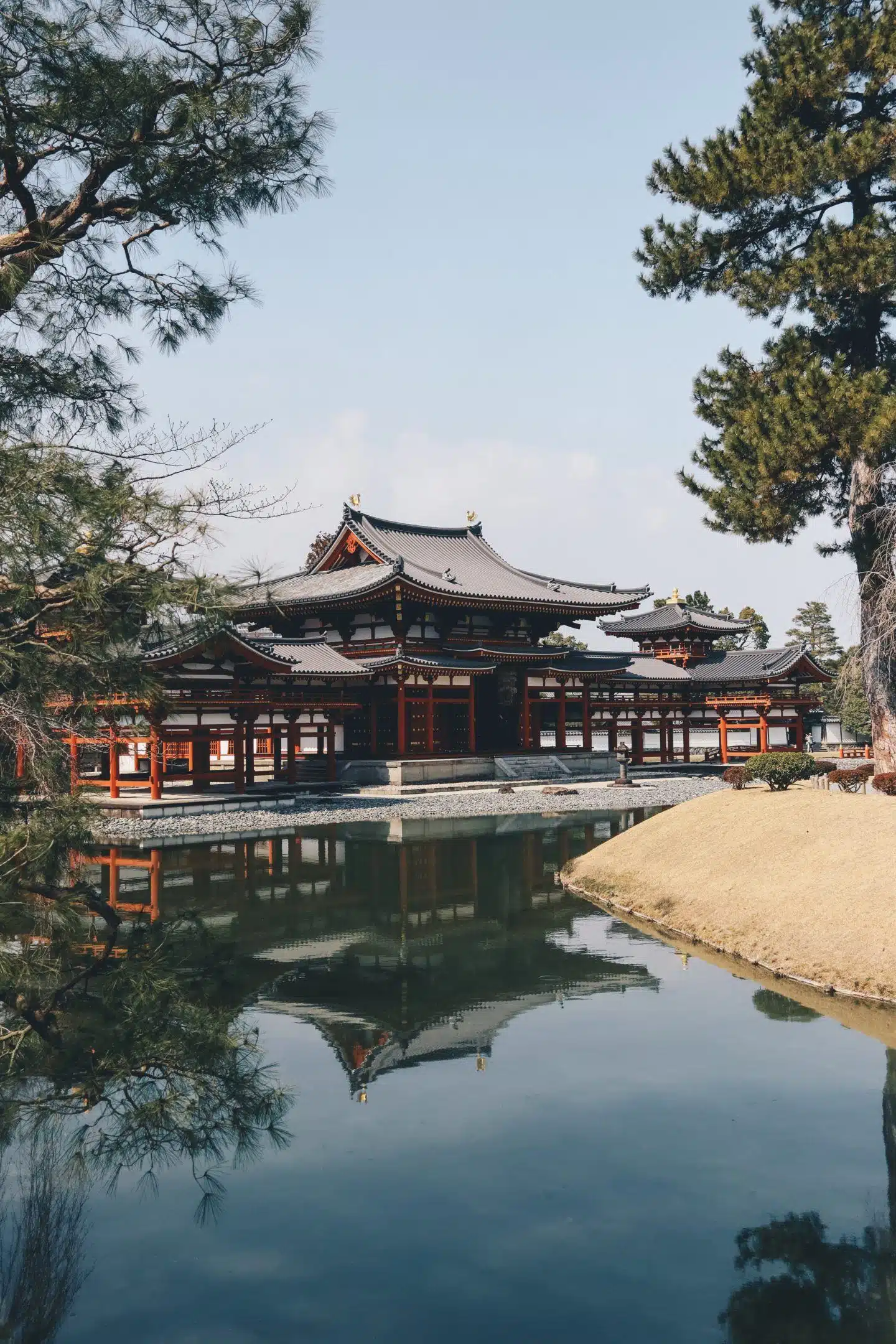
Day Five
First things first: Wake up! Early!
Head to the bamboo grove at Arashiyama—the earlier, the better, as this place gets SUPER crowded. This beautiful spot can be reached from Kyoto easily. It’s 36 minutes on the JR San-in Line—240 yen, but it’s JR, so you can use that pass!
Admire the bamboo grove, take snaps, wander around this tranquil spot, then get out before the tour buses get there!
Now it’s time for a lightning-fast day tour of Nara! It takes 50 minutes on the Kintetsu Nara Line limited express and costs 1,160 yen.
The city of Nara is definitely one of the best day trips from Kyoto and is known for its most famous temple: Todaiji.
Todaiji, in turn, is famous for… it’s giant statue of Buddha.
One of the fun things you can do here is trying to fit yourself through a hole in a pillar inside the temple that is the same size as the statue’s nostrils!! It’s said that if you can fit through, it’s instant enlightenment for you!
Another temple is Kofukuji. This is known for its wooden pagoda and is one of Nara’s “Seven Great Temples.”
There’s a pond nearby called Sarusawanoike, where you can sit on a bench with an onigiri (rice ball) or snack to keep you going!
There’s also Nara Park to explore, known for its deer. They really like snacks and will pester you if they think you’ve got some! Apparently, they really like senbei (rice crackers), and you can buy a pack if you really feel like feeding the deer.
Strolling through Nara Park, you can reach Kasuga-Taisha. This shrine amazingly dates back 1,300 years (786 AD) and is a UNESCO World Heritage Site. Wandering around its mossy stone lanterns, you will feel like you’re in another world entirely. Stay till dusk when it gets super atmospheric, then head back to Kyoto.
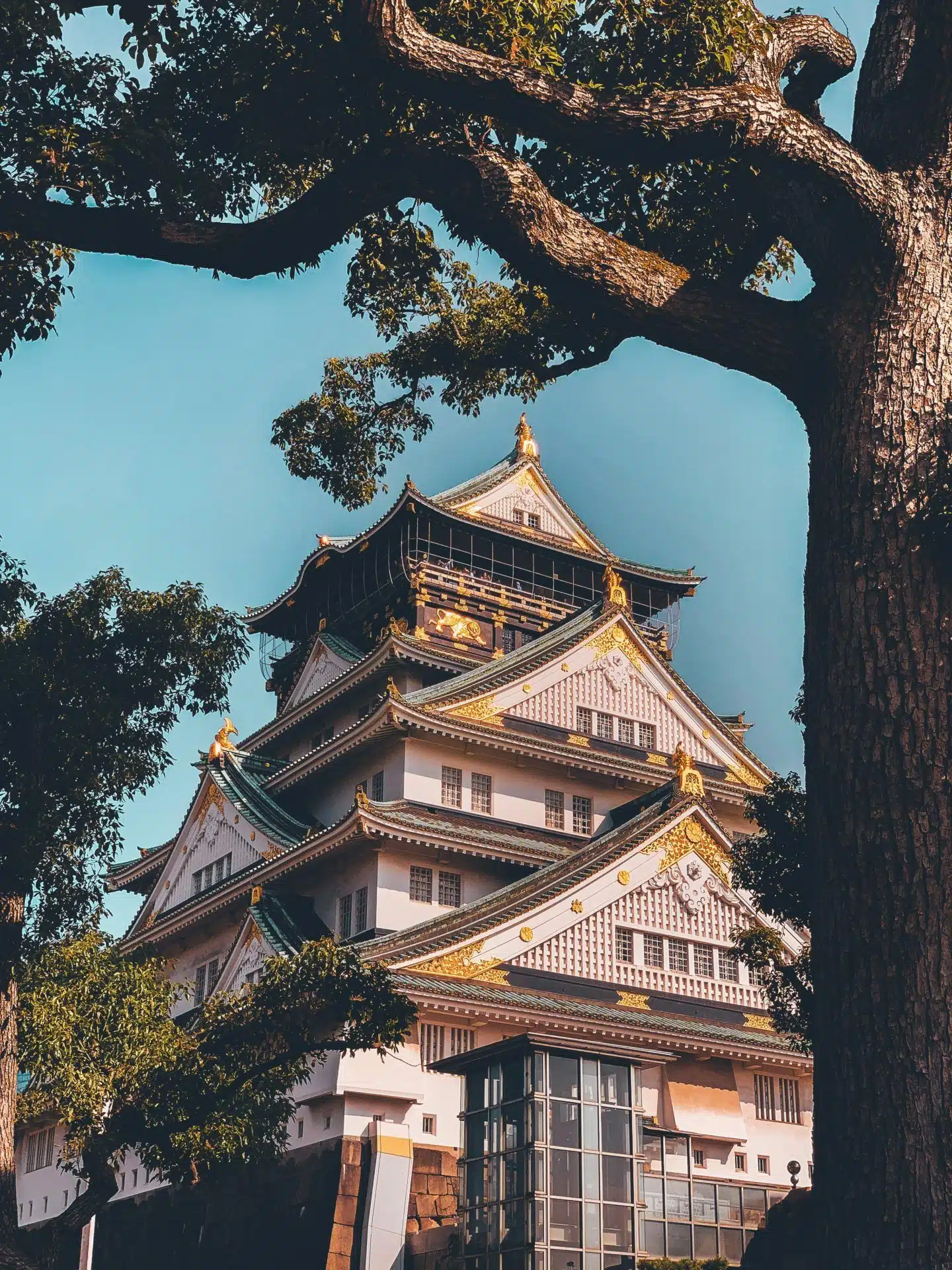
Day Six
Your sixth day on this whirlwind tour of Japan takes you to the home of Japan’s “soul food”—Osaka.
Known for being much more down-to-Earth than Kyoto, and much more gritty and rough around the edges than Tokyo, this sprawling city is a very fun place to be.
And if you’ve got a JR Pass, you’ll be happy to note that the train from Kyoto to Osaka takes only half an hour and is FREE! If you don’t have a pass, it costs 570 yen.
Head on a walking tour around Osaka to get the full effect of this brash but surprisingly beautiful city.
If you are in Osaka when it’s cherry blossom season (late March to early April), then you should definitely take a trip to Osaka Mint Bureau. This old building (now a museum) is pretty cool to see, but it’s the garden here that takes center stage during springtime.
Here, you can see over 300 cherry trees of 100 different varieties (did you even know there were that many?!), and snap away for Insta to your heart’s content. It’s a beautiful place to see the cherry blossom.
From here, it’s a pretty easy walk to another big sight: Osaka Castle. Originally built in the 16th century, it met with many disasters throughout its life before finally being rebuilt in 1931. Somehow surviving the air raids of World War II, today the castle can be visited for a fee (600 yen), but wandering the gardens is free and definitely pleasant enough with a Japanese castle as a backdrop!!
If you have time, I really recommend heading to the crazy retro area that is Shinsekai. Meaning “New World” in Japanese, this nostalgia-evoking area was first developed before WWII and was redeveloped—somewhat, at least —in the 1950s.
Head up Tsutenkaku Tower for city views from the 91-meter-high observatory (800 yen admission fee).
Arguably the most famous hood in Osaka is Minami in Namba. This Downtown area—a renowned entertainment district—is laced with canals and buildings illuminating the scene with millions of LED bulbs. Home to Dotonbori—a street known for its drinking, eating, and the Glico “Running Man”—this is definitely a nighttime hotspot.
You should really get stuck into the foodie scene here. Did you know there is a word in Japanese for eating yourself to ruin? It’s kuidaore—it basically means “eat till you drop” and it originates in Osaka, Japan’s food capital. Try okonomiyaki (thick cabbage pancake) and kushikatsu (all manner of foodstuffs deep-fried and dipped in zingy sauce).
My mouth is watering just thinking about it!
Make your way back to your hotel hopefully not too full of all the tasty things Osaka has to offer.

Day Seven
Osaka is super fun and there are so many things to discover in this sprawling city. But the time has come to move on with this Japan itinerary, and it’s time to make your way from Osaka to another famous Japanese city: Hiroshima.
If you have a JR Pass, of course, it’s basically free to get there. You get the Tokaido-Sanyo Shinkansen from Shin-Osaka Station to Hiroshima Station, which takes around 1 hour and 20 minutes. If you don’t have a JR Pass, this trip will set you back 10,630 yen.
In many ways, Hiroshima could not be more different from Osaka.
Today, it is a modern city, but Hiroshima was infamously obliterated by an atomic bomb—the world’s first atomic bomb ever purposely used against people—in 1945.
In light of that, this city may surprise you.
Hiroshima is a gentle, peaceful, laid back place. Visiting it feels hopeful rather than depressing, and it is well worth your time on a trip to Japan. So, if you were thinking it would be A-bomb based and super sad the whole time—it isn’t.
But one part of it very much is, and you should definitely make a beeline there to understand how the city became what it is today. It’s arguably the place that shaped the future development of Japan as a nation.
Hiroshima’s Peace Memorial Park is the site where the bomb detonated; back in the 1940s, this was the commercial heart of the city. Rather than redevelop the area, the Hiroshima government decided to convert this area into a park—dedicated to peace.
However, one building remains.
That is the A-Bomb Dome (Genbaku Dome in Japanese), or the Hiroshima’s Peace Memorial. It is a haunting site to see this building, left standing somehow after being hit by a nuclear blast. The remains today are recognized by UNESCO as a World Heritage Site.
Visit the nearby Cenotaph for the A-Bomb Victims. Below this arch, there is a chest, which holds the 220,000 names of all those who died due to the A-bomb.
The Hiroshima Peace Memorial Museum is where to go to get a greater understanding of the events that happened that day and the fallout from afterward.
There’s also Hiroshima Castle, a reconstruction of the original that was built in 1589; it is also dubbed the “Carp Castle.” Destroyed by the bomb in 1945, it was rebuilt, and the castle—and its gardens—are a super scenic spot in the city (especially during cherry blossom season). It’s just a 15-minute walk from the Peace Park, and it’s only 370 yen admission. Definitely go!
Hungry? You should try out Hiroshima-style okonomiyaki, which is called modan-yaki—I think I prefer this because it has the addition of noodles into the bargain! Super tasty!
One place that’s good to try this out is Okonomimura, which features multiple different okonimiyaki-specialty joints where you basically can’t go wrong! It’s all amazing.
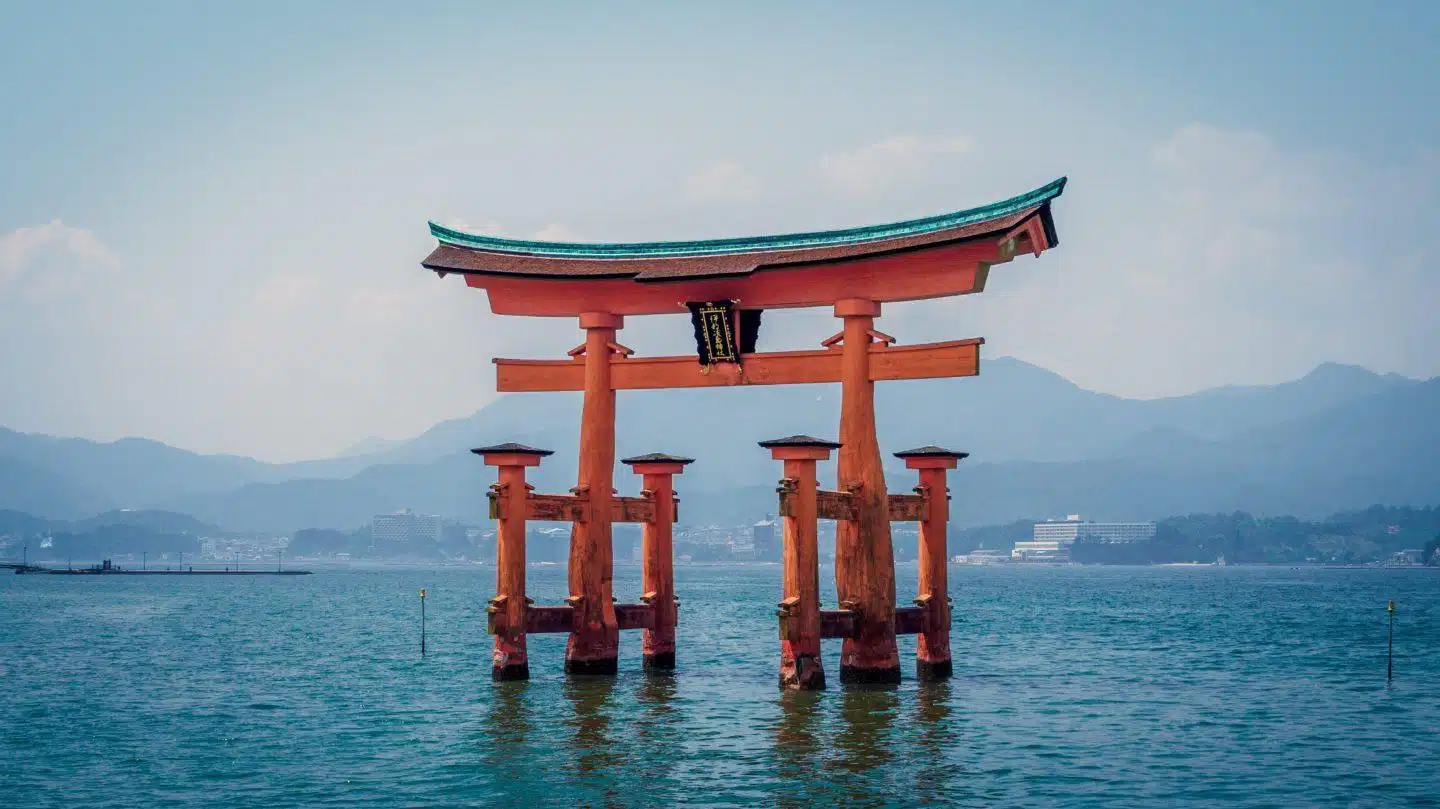
Day Eight
Hiroshima is a great place to base yourself for a couple of days because the city also boasts another very famous sight of Japan that you have probably seen before, and that is the floating torii on Itsukushima.
You may better know this island as Miyajima or “Shrine Island”—the biggest draw here, definitely, is its shrine.
The torii doesn’t actually float, but it is built out to sea. At high tide, it really does look as cool as the pictures make out. It really is another one of those wow-I’m-totally-in-Japan moments!
To get there, you can get the train from Hiroshima Station to Miyajimaguchi Station on the JR Sanyo Line (free for Japan Rail Pass holders again—wahoo!). If you don’t have the JR Pass, this rail trip will cost you 420 yen.
Or for something a little different, you can take the Line 2 tram from Hiroshima bound for Miyajimaguchi. It’s a bit slower, but it’s cheaper (270 yen) and arguably much more atmospheric. It’s the tram! It’s fun!
Once at Miyajimaguchi Station, it’s a couple minutes’ walk to the ferry pier, where there are frequent ferry departures for Miyajima. There are actually two different ferry companies: JR and Matsudai.
If you have the JR Pass, definitely get the JR Ferry. If not, you can take either boat (both cost 180 yen one way, and both take 10 minutes).
Get your camera at the ready as you arrive on the island; you can catch a glimpse of that floating torii as you arrive.
Tip: Check out the tides for the day, so you arrive at high tide… when the torii will indeed be “floating.”
When it’s low tide, the area takes on a different vibe. Older visitors and locals alike take to the sand flats to dig for shellfish, while the floating torii is well, no longer floating! You can see where thousands of worshippers have lodged lucky 5 and 1 yen coins into the cracks of the wooden torii, however. Leave one yourself for good luck!
The island itself is fairly large, but many of the attractions are within walking distance of the ferry terminal. And beware: like Nara, there are roaming deer on the island. I think they might be a little more persistent than the ones in Nara, though!
From Itsukushima Shrine, you can actually go on a hike—if you feel up to it, that is! There are three different hiking trails up Mount Misen, the highest peak on the island at 1,600 feet above sea level.
Momijidani, Daisho-in, and Omoto. Daisho-in isn’t as steep as the other two and has really pretty views, whereas Momijidani is short and steep, through forests. It takes a couple of hours to reach the summit.
Once there, marvel at the sight of the Seto Inland Sea and its multiple islands (you may be able to see Hiroshima in the distance).
Don’t feel like a hike? I don’t blame you!
You can always take the ropeway. It costs 1,840 yen for a round trip—1,010 yen one way. However, taking the ropeway up still means you have to hike the final 100 meters to the mountaintop.
Though you can take your trip in reverse and head back to Hiroshima, it is actually possible to stay on Itsukushima at one of the ryokan (traditional Japanese inns) or hotels dotted around the port.
It’s a super nice way to experience the true serenity of this spot and realize why it is spiritual in the first place, as all the day-trippers and tourists go home and dusk falls.
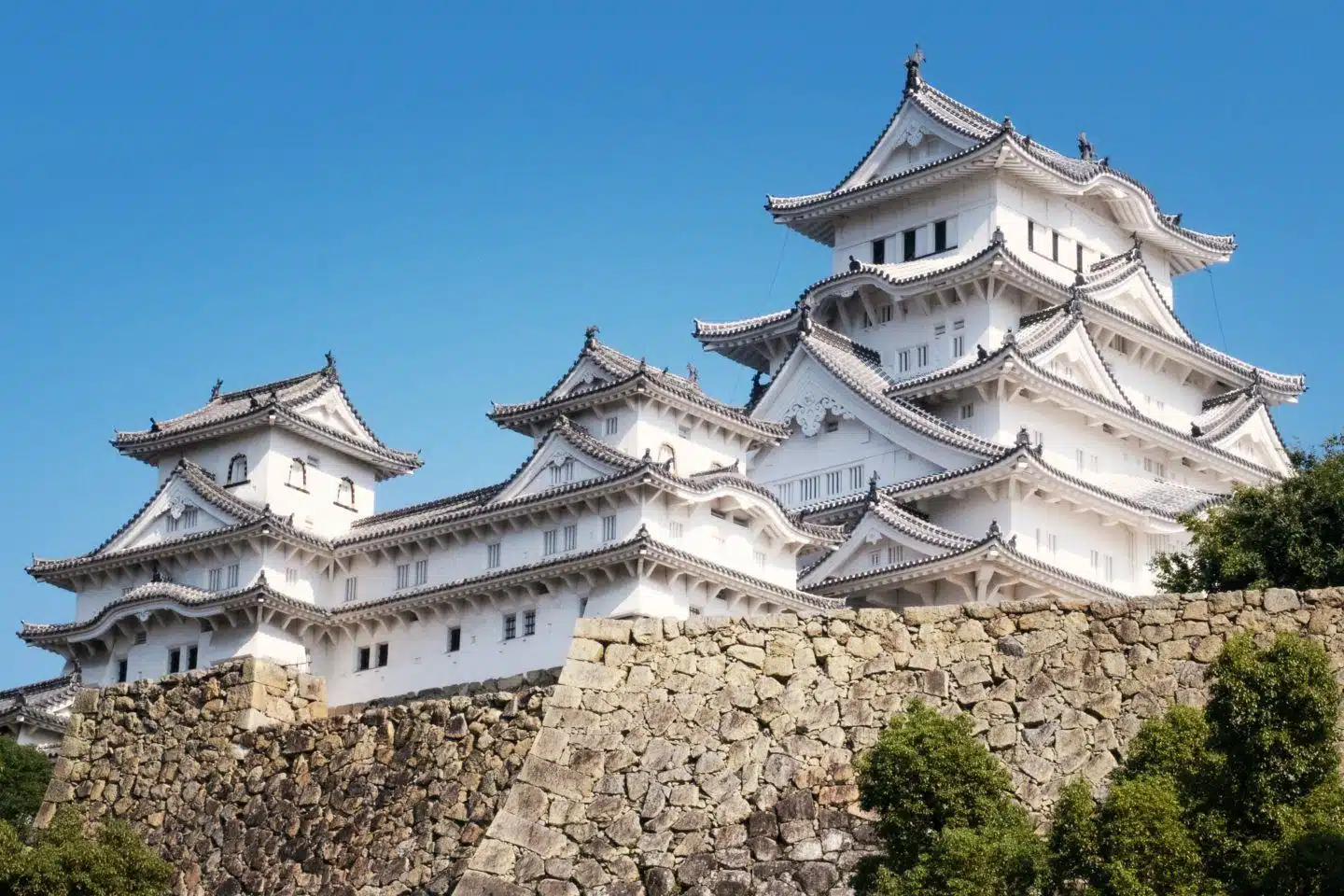
Day Nine
The ninth day of my super in-depth Japan itinerary will really put that Japan Rail Pass of yours to good use.
From Hiroshima (after some breakfast, of course), take the Tokaido-Sanyo Shinkansen back east for one hour and get off at Himeji Station. This costs 8,440 yen if you don’t have the pass.
However, stopping by for the day in Himeji is a must if you are in the area. The reason for this is simple: its castle.
A beautiful sight, this traditional Japanese castle is not rebuilt like the others on this list—or like the majority of castles in Japan—but is, in fact, an original, dating all the way back to the 1400s. This version was completed in 1609, however.
Over 400 years old, this stunning castle is also known as Shirasagijo, which means “White Crane Castle.” You’ll be able to see why when you visit. The pure white elegant architecture against the (hopefully!) blue sky, dotted with pine trees, is truly beautiful. It was also one of the first UNESCO World Heritage Sites in Japan, having been listed in 1993.
Costing 1,000 yen to enter (or 1,050 yen to combine your admission with the nearby Kokoen garden nearby), it’s easily reached from Himeji Station, being just a 15-minute walk away.
Enter through the Otemon gate and in the right season you’ll be greeted by the cherry tree-lined lawns of the Sannomaru (“Third circle” of the castle’s defenses).
After this, it’s on through another gate and through the utterly charming cobbled walkway up to the main keep of the castle itself. Walk around the six-story structure, climb the narrow (and very steep!) staircases, and understand what you’re looking at thanks to multilingual signs.
At the top, there are AMAZING views out across the city!
From here, get back on the Tokaido-Sanyo Shinkansen and be in Kobe in 36 minutes (990 yen).
Firstly, check into your hotel. Once that’s done and dusted, leave your bags behind, maybe take a breather for a moment, then head out again. From Shin-Kobe Station, get the ropeway up to Mount Rokko and await the sunset. You get an awesome view of the city coming to life with glittering lights. A round trip costs 900 yen after 5 pm.
If you manage to get to the city way before sunset, then you will have some time on your hands.
Head to the Sorakuen, a traditional Japanese garden in the center of the city. Costing 300 yen to enter, it was once part of an old residence but was opened to the public in 1941.
There is also the option of walking around Kitano-Cho. There are a huge amount of Western-style buildings here—once the homes of Western traders, diplomats, and professionals—as Kobe was one of the cities that opened up to Western trade at the same time as Yokohama.
There’s even a Starbucks in one of these old houses—referred to in Japanese as ijin-kan or “foreign buildings.”
For dinner? Well, you’ve heard of Kobe beef, haven’t you?? Wagyu (or “Japanese beef”) is world-famous! You’ll definitely be able to find somewhere totally tasty in this important world city.
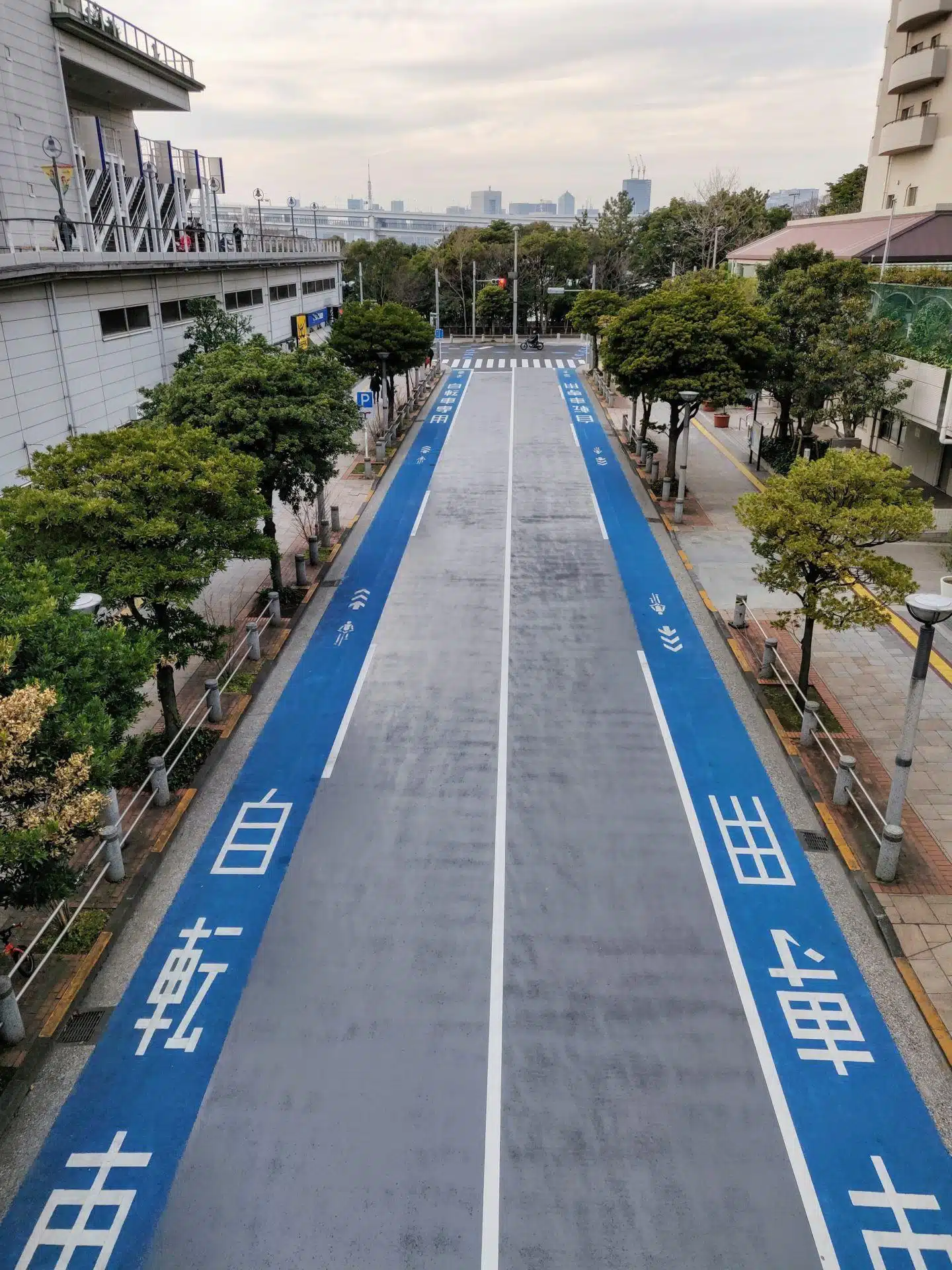
Day Ten
It’s day ten—your final day of exploring the incredible nation of Japan. Unfortunately, this day starts with a pretty extended bit of traveling. You take the train from Shin-Kobe Station all the way to Tokyo Station. It takes 2 hours and 47 minutes and costs 15,380 yen.
Again, if you have the JR Pass, it’s free of charge. After a while, this place really pays for itself!
But you should spend your last day in style getting arguably THE best view of Tokyo from up high… and that is the Tokyo Skytree. There are two observatories, and I recommend getting a ticket that covers both.
It costs 3,100 yen on a weekday, and 3,400 yen at the weekend (and holidays). The second-highest deck is 350 meters tall, while the tallest is 450 meters. The view makes the sprawling metropolis look like a toy town from this amazing height.
Afterward—if you have time—I recommend heading to Odaiba to get views of the Rainbow Bridge and snap a pic of the city as night falls to wrap up your amazing adventures.
But it’s not over yet! Head back to Yurakucho on the Yurikamome Line from Odaiba (24 mins) and go to one of the many izakaya (Japanese style bars) nestled under the train lines for a final blast of Japanese culture. Or have drinks and dinner at nearby Ginza. It’s up to you!
There you have it! Your 10 day itinerary for making the most out of a trip to Japan if you’re visiting for the first time.
I recommend getting a JR Pass, as this itinerary features a lot of travel using the JR (Japan Rail) lines—made FREE with the pass! You should also get travel insurance (that’s a must, though), and I do recommend getting down some basic language skills with Japan. A little goes a long way!
I haven’t been with kids, so check out this post if you’re planning a family trip to Japan.
And if you’re staying in Asia for a while and considering visiting South Korea, check out this guide on Gamcheon Culture Village. You’ll also want to check out this post on how to get from Incheon Airport to Seoul.
If you make your way to any of the places I’ve mentioned on your travels—or find some hidden gems along the way—please tag me @wtfab in your Insta posts and stories. I’m always super happy to see some Japan vibes!
Be sure to check out my other Japan travel guides here.
Best Tokyo Airbnbs
Best Places to View Cherry Blossoms in Tokyo
Best Time to Visit Tokyo
11 Things You Need to Put on Your Tokyo Itinerary
Park Hyatt Tokyo
7 Places to Visit Near Tokyo
Best Places to Stay in Tokyo: In-Depth Look into Tokyo’s Neighborhoods
8 Things to do in Tokyo with Kids
FAQs
The time to visit Japan is from March to May or September to November. The weather will be the best during these times.
It is recommended to spend at least three to five days in Tokyo. But to really explore the city you should spend a week or more.
The best way to prepare for any trip is researching everything about the place you’re visiting and plan everything ahead so you’re prepared.

Elise Armitage is an entrepreneur and founder of What The Fab, a travel + lifestyle blog based in California. At the beginning of 2019, Elise left her corporate job at Google to chase her dreams: being an entrepreneur and helping women find fabulous in the everyday. Since then, she’s launched her SEO course Six-Figure SEO, where she teaches bloggers how to create a passive revenue stream from their website using SEO. Featured in publications like Forbes, Elle, HerMoney, and Real Simple, Elise is a firm believer that you can be of both substance and style.



